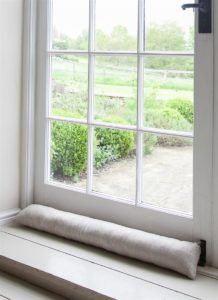In the United Kingdom, it is typical that Brits will turn their central heating on at around October time and make daily use of it until March or April time. Other than the obvious drop in temperature, this timing of putting the central heating on coincides with the clocks going back and the Winter Fuel Payments – relevant to anyone who pays a state pension.
The heating of a domestic dwelling can account for over 70% of the overall household energy consumption and can, therefore, rack up a large bill. The aim is then to cut the energy bills whilst keeping your house warm enough during the winter, especially when it snows!
Recent statistics show that 2.38m households in the United Kingdom are in what has been referred to as “fuel poverty” by the government. Essentially, this means that almost 11% of all British households are unable to heat their homes to stay warm indoors. Whilst the scale of this problem is clearly large and needs attending to. However, some of the solutions need not be complex or costly and can be DIY in nature.
Make use of your curtains
 Curtains are not just for blocking out light or providing privacy in the evenings and night times, they can also act as an extra layer of insulation. As soon as it gets dark, be sure to shut your curtain to keep warmth in the rooms in your house.
Curtains are not just for blocking out light or providing privacy in the evenings and night times, they can also act as an extra layer of insulation. As soon as it gets dark, be sure to shut your curtain to keep warmth in the rooms in your house.
Furthermore, the heat from the sun is free and can heat up your rooms during sunlight hours. Then when you shut your curtains at night, this heat will be retained.
Use timers on your central heating

As the Centre For Sustainable Energy advises, programming your boiler to turn on the heating a little earlier, around 30 minutes before you usually wake up in the morning for example, at a lower temperature is actually going to work out cheaper than turning it on as you need it at a higher temperature. This is because the boiler heats up at a constant speed whether you set it at a lower of a higher temperature.
In saying this, do not make the error leaving the heating on low at a constant rate as you will just be paying for heat that you are not using, especially if you are out during the daytime mostly.
Maximise the insulation in your home
It is true that around 25% of heat is lost through the roof in a property. This can be easily fixed by reducing the amount of heat lost by installing 25cm of insulation throughout your loft.
It is also worth seeing what is going on in your walls, as they can be a cause of rapid heat loss. Although it is not going to be as cheap as a lost insulation, cavity wall insulation could save you up to £160 a year on your energy bills still.
Block out the draughts
 Invest in an inexpensive draught excluder, these also look nice as a form of decor. You can even make these yourself! The Energy Saving Trust has estimated that DIY draught-proofing your doors, windows and cracks in your floor can rack up to saving of £25 per year. To make your own draught-blockers, purchase some self-adhesive rubber to seal around your doors and windows.
Invest in an inexpensive draught excluder, these also look nice as a form of decor. You can even make these yourself! The Energy Saving Trust has estimated that DIY draught-proofing your doors, windows and cracks in your floor can rack up to saving of £25 per year. To make your own draught-blockers, purchase some self-adhesive rubber to seal around your doors and windows.
Upgrade the boiler
Consider upgrading your boiler if it is more than 10 years old in age. You should look into getting a newer and more efficient model, and depending on your old boiler type and house, this could save you up to £350 with a new A-rated condensing boiler. An A-rated condensing boiler essentially uses less energy to produce the same amount of heat as a traditional boiler. In addition, you are less likely to have any problems with it going into winter and the coming years – a truly valuable investment.

